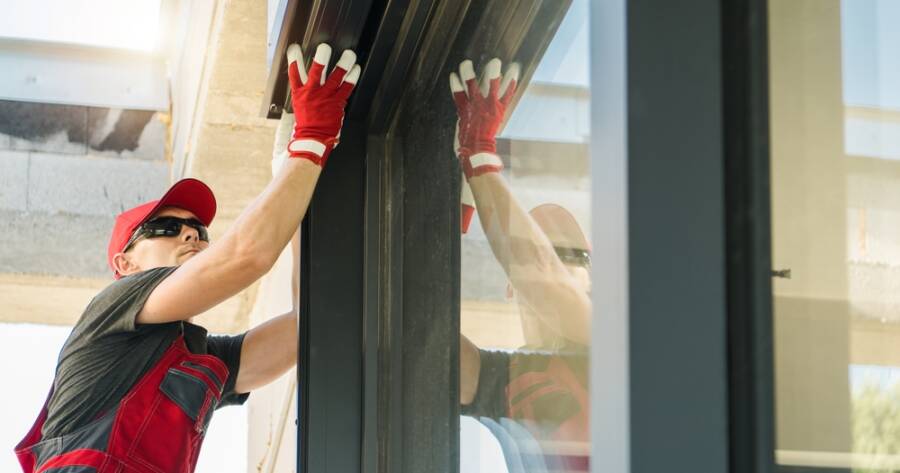Upgrading the windows in your home can be a transformative project, enhancing not only the aesthetics of your living space but also its energy efficiency, security, and overall comfort. With a variety of window replacement options available, the decision can feel overwhelming. This guide will explore the key considerations and choices to help you find the right fit for your home’s unique needs and style.
Why Replace Your Windows?
Replacing windows is often motivated by a combination of functional and aesthetic factors. Older windows may let in drafts, be difficult to operate, or detract from your home’s curb appeal. Newer models, designed with modern technology, offer improved insulation and energy efficiency, potentially reducing heating and cooling costs.
Additionally, replacement windows can enhance home security, reduce outside noise, and add value to your property. Understanding your goals—whether they center on saving energy, improving aesthetics, or boosting functionality—is the first step in choosing the best replacement option.
Common Types of Window Frames
The material used for window frames significantly impacts durability, maintenance, and appearance. Here are some popular options:
1. Vinyl Frames
Vinyl windows are a budget-friendly and low-maintenance option. They resist moisture, don’t require painting, and offer decent insulation. However, some homeowners feel that vinyl lacks the premium look of other materials, which may be a factor if aesthetics are a priority.
2. Wood Frames
Wood frames provide a timeless, classic appearance and excellent insulation properties. They’re often favored in historical or high-end homes for their aesthetic appeal. However, wood requires regular maintenance, such as painting or staining, to prevent deterioration from moisture or pests.
3. Aluminum Frames
Known for their strength and sleek design, aluminum frames are ideal for modern homes. While they’re durable and resistant to weathering, aluminum conducts heat, making them less energy-efficient unless paired with thermal breaks.
4. Fiberglass Frames
Fiberglass frames combine durability and energy efficiency. They can mimic the look of wood without the associated maintenance and tend to resist warping, rotting, or expanding over time. Their higher cost, however, may be a consideration for budget-conscious homeowners.
Types of Window Glass Options
Glass choice is critical for energy efficiency, safety, and comfort. Modern window designs often feature advanced glazing technologies tailored to specific climates and homeowner preferences.
1. Single-Pane Glass
Found in older homes, single-pane windows offer minimal insulation and are rarely chosen for modern replacements unless historical accuracy is essential.
2. Double-Pane Glass
Double-pane windows feature two layers of glass with an insulating gas, such as argon, in between. This design can improve energy efficiency by reducing heat transfer.
3. Triple-Pane Glass
For colder climates, triple-pane windows provide even greater insulation and energy efficiency. They can also enhance soundproofing, making them ideal for noisy neighborhoods.
4. Low-E Glass
Low-emissivity (Low-E) glass has a special coating that reflects heat while allowing natural light to pass through. It’s an excellent choice for homes aiming to balance energy savings with comfortable interior temperatures.
Window Styles To Suit Every Home
Your choice of window style influences not only your home’s appearance but also its ventilation and lighting. Here are some popular options to consider:
1. Double-Hung Windows
These windows have two movable sashes that slide vertically, making them versatile and easy to clean. They suit traditional and colonial-style homes.
2. Casement Windows
Hinged at the side and opening outward like a door, casement windows provide excellent ventilation and unobstructed views. They’re ideal for contemporary homes.
3. Bay and Bow Windows
These window styles extend outward from the home, creating a spacious feel and adding architectural interest. They’re perfect for living rooms or kitchens where natural light is a priority.
4. Sliding Windows
Sliding windows glide horizontally along a track and are often used in spaces with limited vertical clearance. They’re practical and easy to operate.
5. Awning Windows
Hinged at the top and opening outward, awning windows allow ventilation even during rain. They’re frequently used in bathrooms and basements.
Factors to Consider When Choosing Replacement Windows
Selecting replacement windows involves balancing several factors:
1. Climate
Windows should match your climate. Homes in colder regions may benefit from triple-pane glass, while Low-E coatings can help in hot, sunny areas.
2. Energy Efficiency
Look for windows with Energy Star certification or a high U-factor and Solar Heat Gain Coefficient (SHGC). These ratings indicate energy efficiency and can lead to potential cost savings.
3. Budget
Replacement window costs vary widely depending on materials, style, and glazing. Set a realistic budget, factoring in installation costs.
4. Maintenance Needs
Certain materials, like wood, require regular upkeep, while others, like vinyl, are nearly maintenance-free. Consider your willingness and ability to maintain the windows over time.
5. Aesthetics
Windows play a major role in your home’s curb appeal. Ensure the style and material complement your home’s architecture and your personal preferences.
Enhancing Your Home With the Right Windows
Choosing the right replacement windows is an investment in your home’s comfort, efficiency, and value. By considering frame materials, glass options, and window styles, you can tailor your selection to meet your unique needs and aesthetic goals. \Consult with a reputable window professional to explore your options, evaluate costs, and ensure expert installation. Whether you prioritize energy savings, style, or ease of maintenance, upgrading your windows can bring lasting benefits to your living space.
